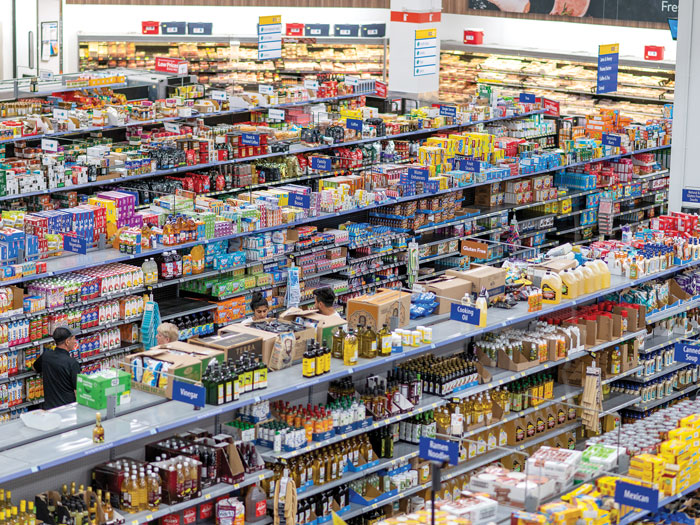Limited consumer choice? Blame the corporate monopolies
 In Canada, Sobeys, Loblaws, Metro, Costco and Walmart command over 60 per cent of the grocery market (Getty)
In Canada, Sobeys, Loblaws, Metro, Costco and Walmart command over 60 per cent of the grocery market (Getty)
Many Canadians have felt the pinch of rising inflation; everything from groceries, gas, and real estate have increased at an alarming rate. While there is no single culprit behind price hikes and rising inflation, the global financial crisis of 2008 and corporate profiteering under COVID-19 has reasonably caused many of us to re-evaluate the state of our economy. Innovation, free enterprise and competition are held up as cherished values that are in many cases not reality. Several industries in Canada and the U.S. are increasingly under the control of the corporate monopolies or oligopolies that have stifled innovation, curtailed competition and fostered an economic environment where shareholders are placed ahead of the needs of citizens.
The merits of a monopoly isn’t just a political question, it is also tied to whether a model of competition suits a given industry. For example, utilities such as water and electricity tend to be in the hands of one company, these natural monopolies are more efficient at delivering utilities than a system of competing firms.
In Canada we have numerous examples of monopolistic and oligopolistic hegemony in many of our industries. TD, RBC, BNS, BMO, and CIBC control 90 per cent of the banking industry; Rogers, Bell, and Telus account for 88.7 per cent of the telecommunications market; Air Canada and WestJet command over 85 per cent the airline industry; ABInBev and Coors control 63 per cent of the beer market; and Sobeys, Loblaws, Metro, Costco, and Walmart command over 60 per cent of the grocery market. Much of our consumer market is nothing but the social theatre of choice, with a myriad of stores and products under the portfolio of many of these large corporations. It is no wonder that Canadians pay a premium on cell phone plans, banking, and travel.
After the New Deal in 1933, the U.S. government committed to the task of shrinking monopolies. The state’s perception of monopolies was as a threat to democracy itself, since a company with a monopoly has the ability to influence government and policy that may serve shareholders rather than citizens. Over time, neoliberal economists during the Reagan years eschewed the idea of citizenship within antitrust policy, preferring to limit the discussion to merely “consumer welfare.” As long as consumer prices remained stable, they were able to do as they pleased.
These policy shifts laid the groundwork for the rise of Big Tech. Both Canada and the United States have been woefully inept in curbing the power of Facebook, Amazon, Apple, Netflix and Google (FAANG). At present Google accounts for 90 per cent of global internet searches, Facebook and Google receive over 95 per cent of ad spending; 95 per cent of adults under 30 are on Facebook or Instagram; and Amazon accounts for over 50 per cent of all U.S. e-commerce sales.
Many of these companies have been able to flout taxation, labour laws and competition legislation, dominating markets by way of predatory prices and mergers. This can even be seen in accounting firms, with Bill Michael, the former chair of KPMG, describing the Big Four (KPMG, Deloitte, EY, and PwC) as an “undeniable oligopoly” and headed toward reform. It’s a difficult take to argue against as the Big Four hold the lion’s share of FTSE audits, accounting for all but 11 of the FTSE 350 constituents.
The solution has been echoed throughout the decades: a revamp of competition laws. But if politicians are hesitant to push and companies are unwilling to budge, reform may just be a pipe dream.
WHERE DO WE GO FROM HERE?
With big companies in control of the market, consumers are left with less choice and experts can’t agree on the way forward. Here’s what this means for Canadians.